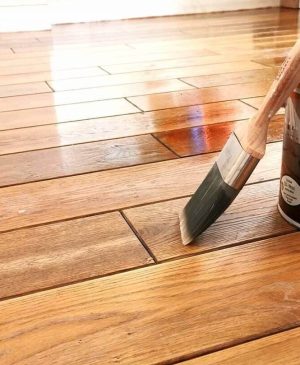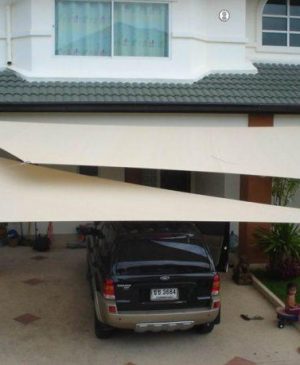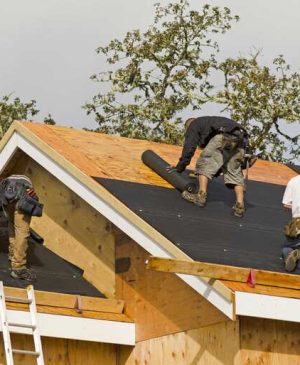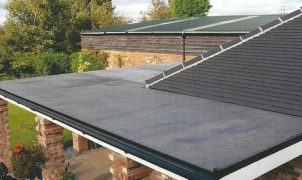Flat roofs, while aesthetically pleasing and versatile, come with their own set of challenges when it comes to maintenance and durability. Unlike pitched roofs, which naturally shed water, flat roofs require thoughtful consideration and regular care to prevent water pooling, leaks, and long-term structural damage. However, with proper care and strategic maintenance, a flat roof can offer years of reliable service and enhance the look of your home or commercial property.
In this article, we will explore the top 10 flat roof tips to ensure your roof stays in top condition, performing well for years to come. These tips will help you address common issues such as drainage, insulation, and repair, ensuring your roof remains secure, weather-resistant, and efficient.
1. Regular Inspections Are Key
The first step in ensuring your flat roof lasts is to conduct regular inspections. Unlike sloped roofs, flat roofs are more susceptible to standing water, debris buildup, and other environmental factors. Regularly inspecting your roof—ideally every six months—helps you catch small issues before they escalate into costly problems. Pay particular attention to areas like seams, flashing, and drain outlets where water may collect or leak through. Early detection of cracks, blisters, or pooling water can save you from more serious, expensive repairs later on.
2. Ensure Proper Drainage
Flat roofs are designed to have a slight slope to facilitate water drainage, but over time, the drainage system can become clogged with debris, leaves, and dirt. This can lead to water pooling, which, if left unchecked, may result in leaks, mold growth, or even structural damage. To avoid this, make sure your roof’s drainage system is clear and functional. Clean gutters, downspouts, and drains regularly, especially after storms or high winds. Consider installing additional drains in areas where water tends to pool if needed.
3. Use High-Quality Roofing Materials
When it comes to flat roofs, the choice of material plays a significant role in long-term durability and weather resistance. Several materials are commonly used for flat roofing, including:
-
EPDM (Ethylene Propylene Diene Monomer): A highly durable synthetic rubber that’s resistant to UV rays and extreme temperatures.
-
TPO (Thermoplastic Olefin): A heat-reflective, energy-efficient material that’s particularly effective in sunny climates.
-
PVC (Polyvinyl Chloride): Known for its durability, UV resistance, and low maintenance, PVC is an excellent choice for flat roofs.
-
Modified Bitumen: A flexible, asphalt-based roofing material that’s suitable for both residential and commercial properties.
Each material offers distinct benefits, but regardless of your choice, ensure that the roofing materials are installed according to the manufacturer’s instructions and are of high quality. Quality roofing materials are your first line of defense against leaks, UV damage, and wear and tear.
4. Seal Around Penetrations
Penetrations, such as chimneys, vents, and skylights, are common sources of leaks in flat roofs. Over time, seals around these penetrations can deteriorate, allowing water to seep into your building. Regularly check and reseal these areas to maintain a watertight seal. You can use roofing sealants or silicone caulk, depending on the type of roof and the specific material you’re working with. Properly sealing these gaps will help prevent water from infiltrating your flat roof and causing damage.
5. Maintain Roof Insulation
Flat roofs often serve as the main insulation layer for buildings, which means ensuring proper insulation is essential for both energy efficiency and structural integrity. Insufficient or damaged insulation can lead to higher energy costs and create a favorable environment for moisture build-up, which can compromise your roof. Check the insulation regularly to ensure it is intact, dry, and performing effectively. If you notice any gaps, dampness, or mold growth, it’s important to replace or repair the insulation to maintain a healthy roofing system.
6. Choose the Right Roof Slope
While flat roofs aren’t entirely flat, they do require a slight slope to help with water drainage. The slope should generally be between 1/4 inch and 1/2 inch per foot, allowing water to flow off the roof rather than pooling. If you’re installing a new flat roof or replacing an old one, ensure that the slope is properly designed and implemented. If water tends to accumulate in certain spots on your existing roof, consider addressing the slope through re-sloping or adding additional drainage to those areas. A slight, effective slope will prevent water buildup, which is one of the most common causes of flat roof issues.
7. Protect the Roof from Debris
Debris such as leaves, branches, dirt, and moss can accumulate on a flat roof over time, leading to clogged drainage systems and reduced roof efficiency. In addition, debris can trap moisture against the roofing material, which may cause rot, mold, or algae growth. Regularly remove debris from your roof to maintain its longevity. You can use a broom, leaf blower, or a soft-bristled brush to clear away debris. It’s also a good idea to check the areas around roof penetrations to ensure nothing is obstructing the flow of water.
8. Consider Reflective Coatings
In regions with hot climates, reflective coatings can help extend the lifespan of your flat roof and improve energy efficiency. A reflective roof coating works by deflecting the sun’s UV rays, reducing heat absorption, and minimizing wear on the roof. This can lower cooling costs by reducing the amount of heat entering your home or building. Reflective coatings are particularly beneficial for TPO and EPDM roofs, and they can be applied during a regular inspection or as part of a routine maintenance plan.
9. Repair Small Problems Immediately
Flat roofs may not always show obvious signs of damage until the problem has become severe. For this reason, it’s essential to repair small issues immediately rather than letting them worsen. Small cracks, blisters, or tears in the roofing membrane can quickly grow into larger problems that result in leaks, structural damage, and expensive repairs. If you notice any signs of wear or damage during your regular inspection, address them right away. Many flat roofing materials come with patches or repair kits specifically designed for small fixes, allowing you to manage minor issues before they escalate.
10. Work with Professional Roofers
While many flat roof maintenance tasks can be handled by homeowners, it’s always wise to enlist the help of professional roofers for complex issues. Roofing contractors have the knowledge, tools, and expertise to properly assess your roof’s condition, perform advanced repairs, and make sure the roof is weatherproof and structurally sound. Professionals can also recommend appropriate maintenance schedules and provide warranties for their work, giving you added peace of mind.
Conclusion
Flat roofs are a popular choice for modern homes and commercial buildings due to their sleek appearance and versatility. However, their design presents unique challenges that require thoughtful care and regular maintenance to ensure long-term performance. By following these top 10 flat roof tips—ranging from regular inspections and proper drainage to choosing high-quality materials and sealing penetrations—you can enhance the durability, energy efficiency, and overall health of your flat roof.
With proper care, a flat roof can offer decades of reliable service, protecting your home and contributing to its overall aesthetic. Keep these tips in mind, and don’t hesitate to consult with a professional roofer to address any issues or concerns that arise. A well-maintained flat roof can be the foundation for a secure, comfortable, and energy-efficient home.


















